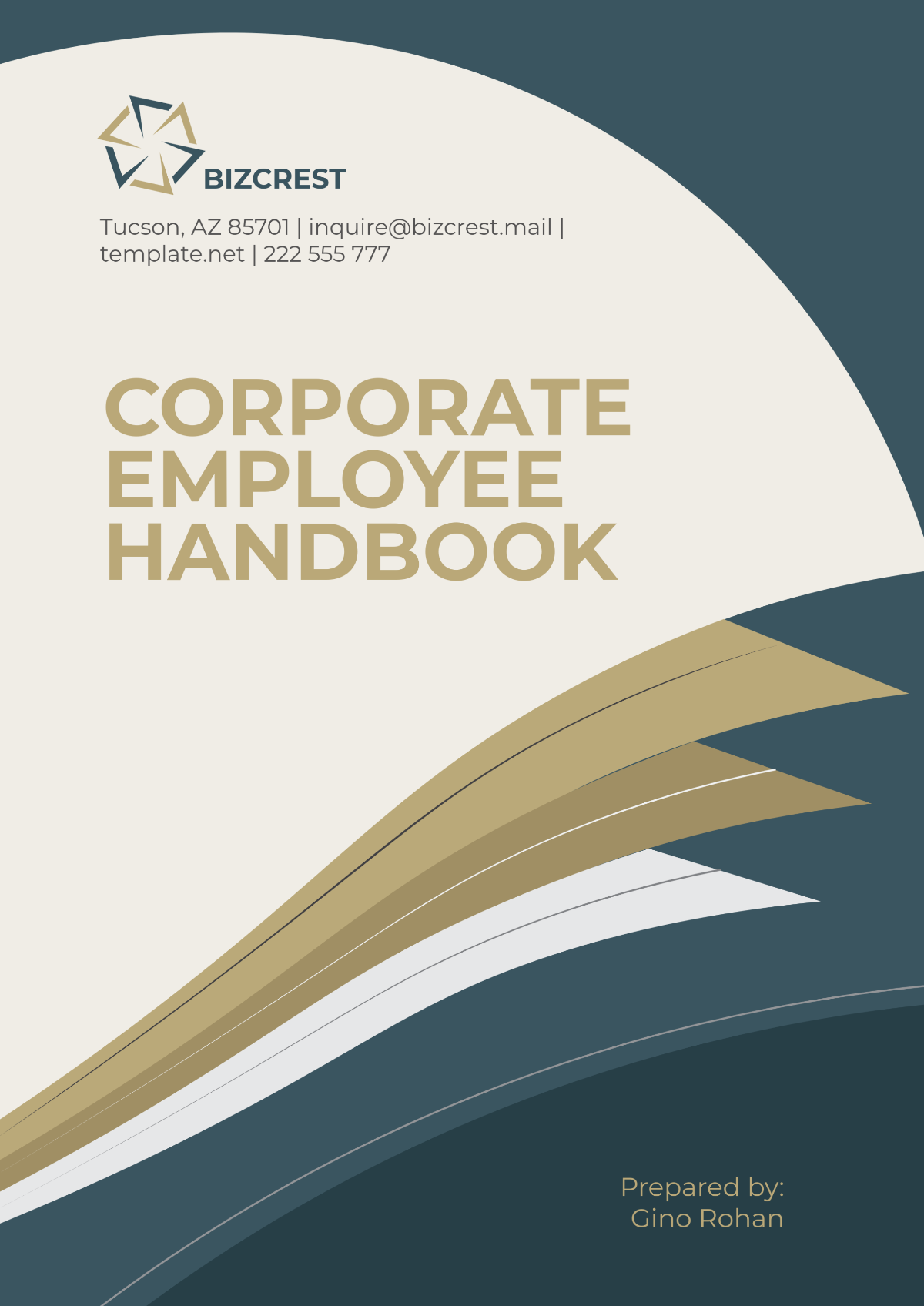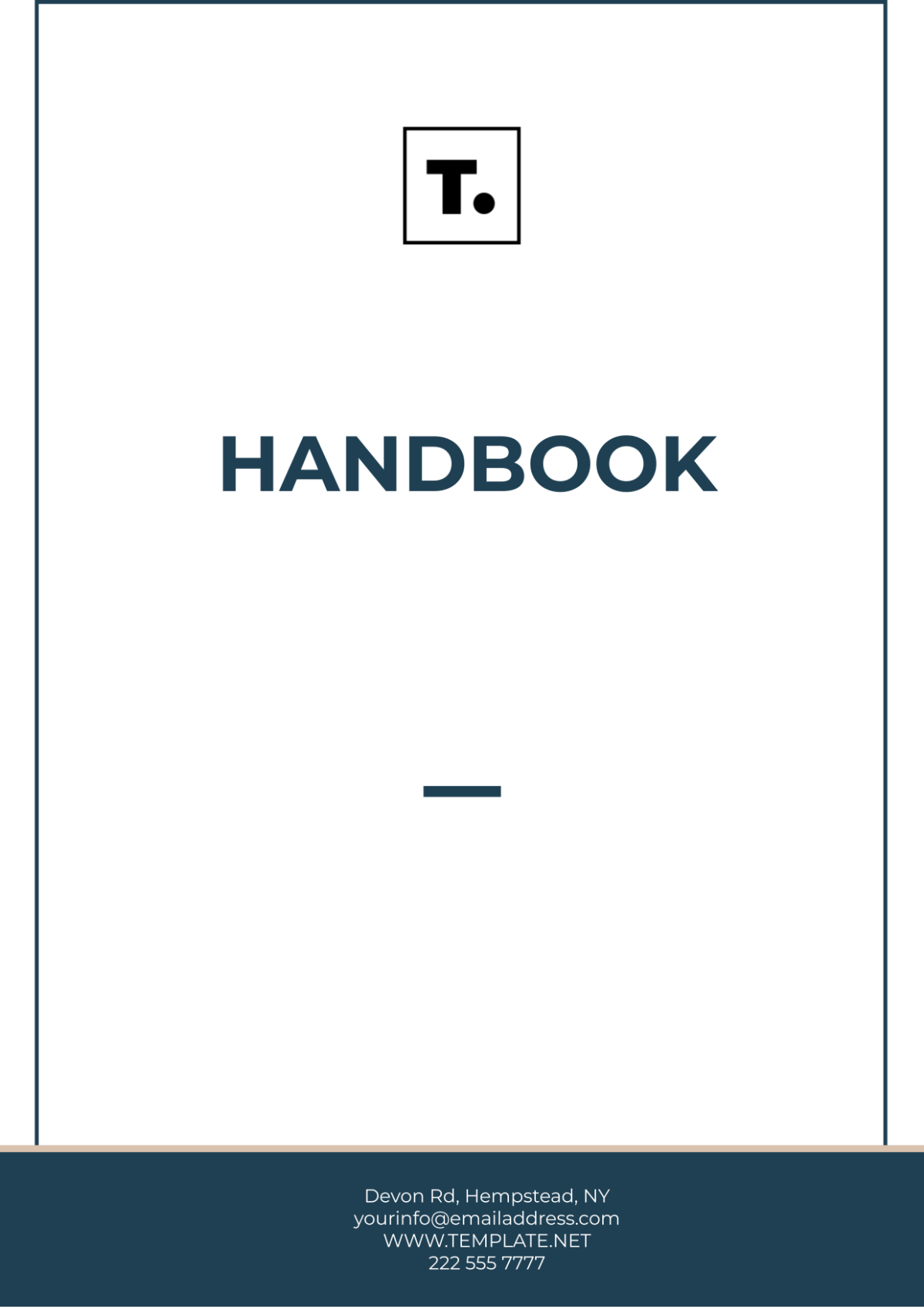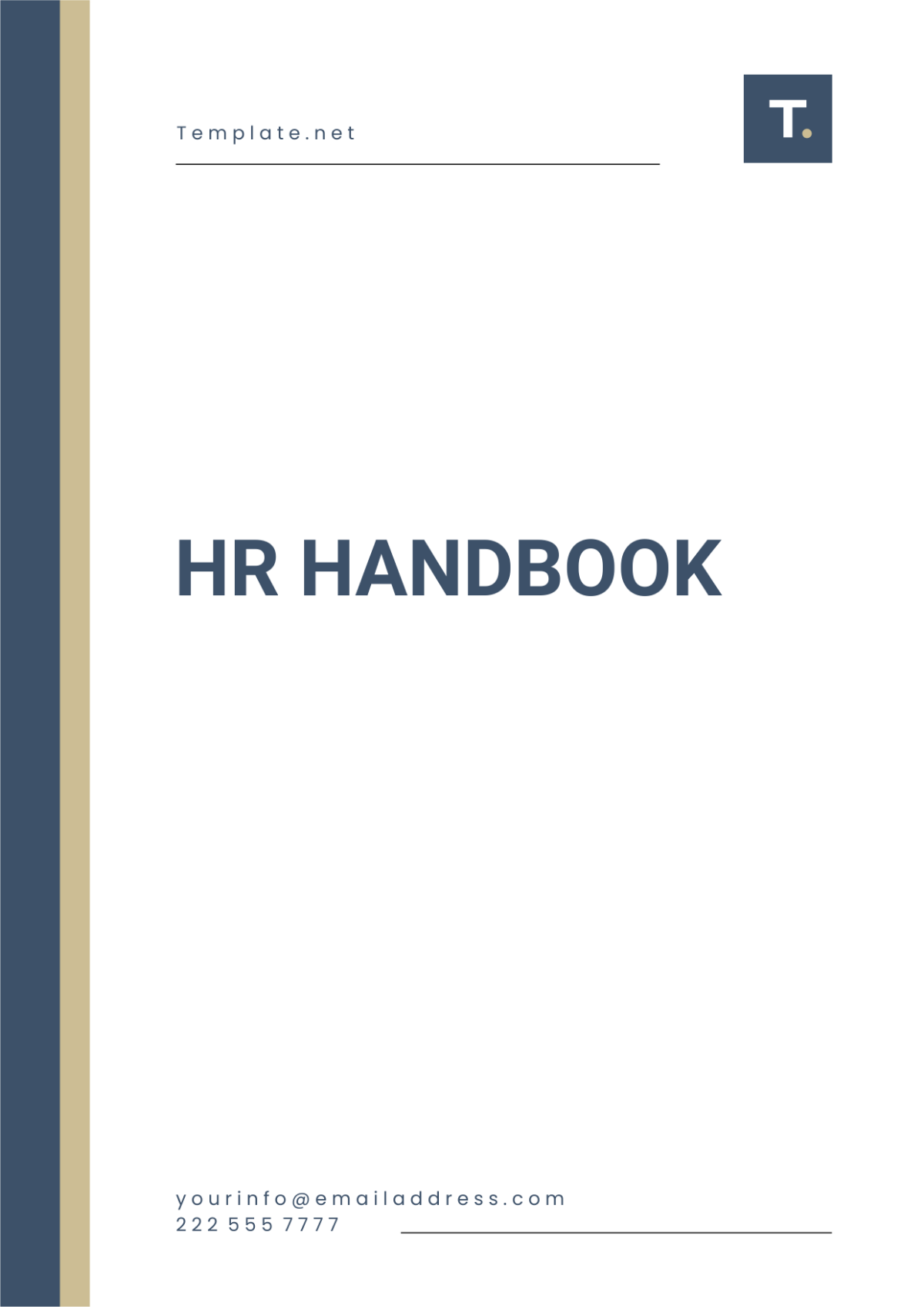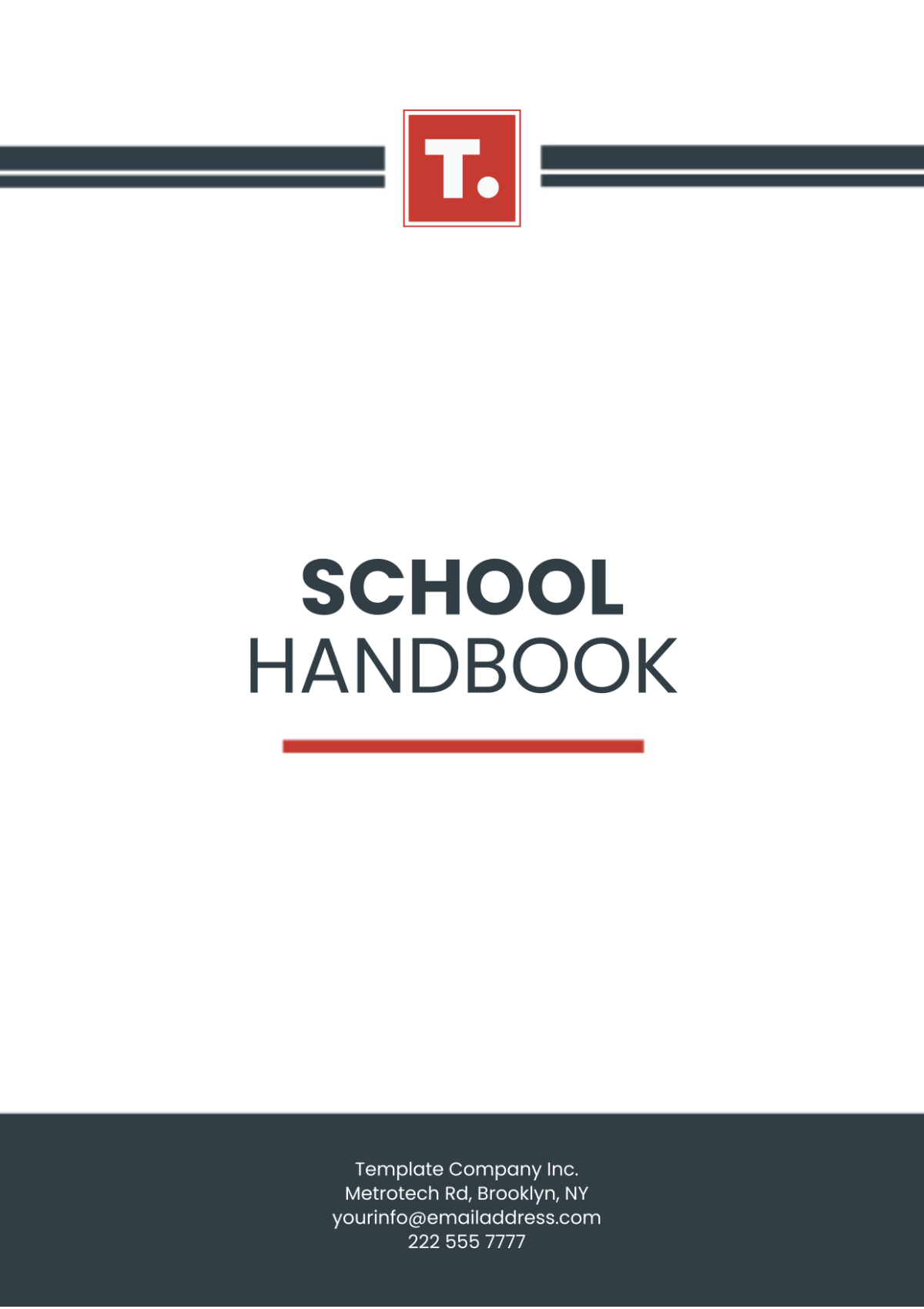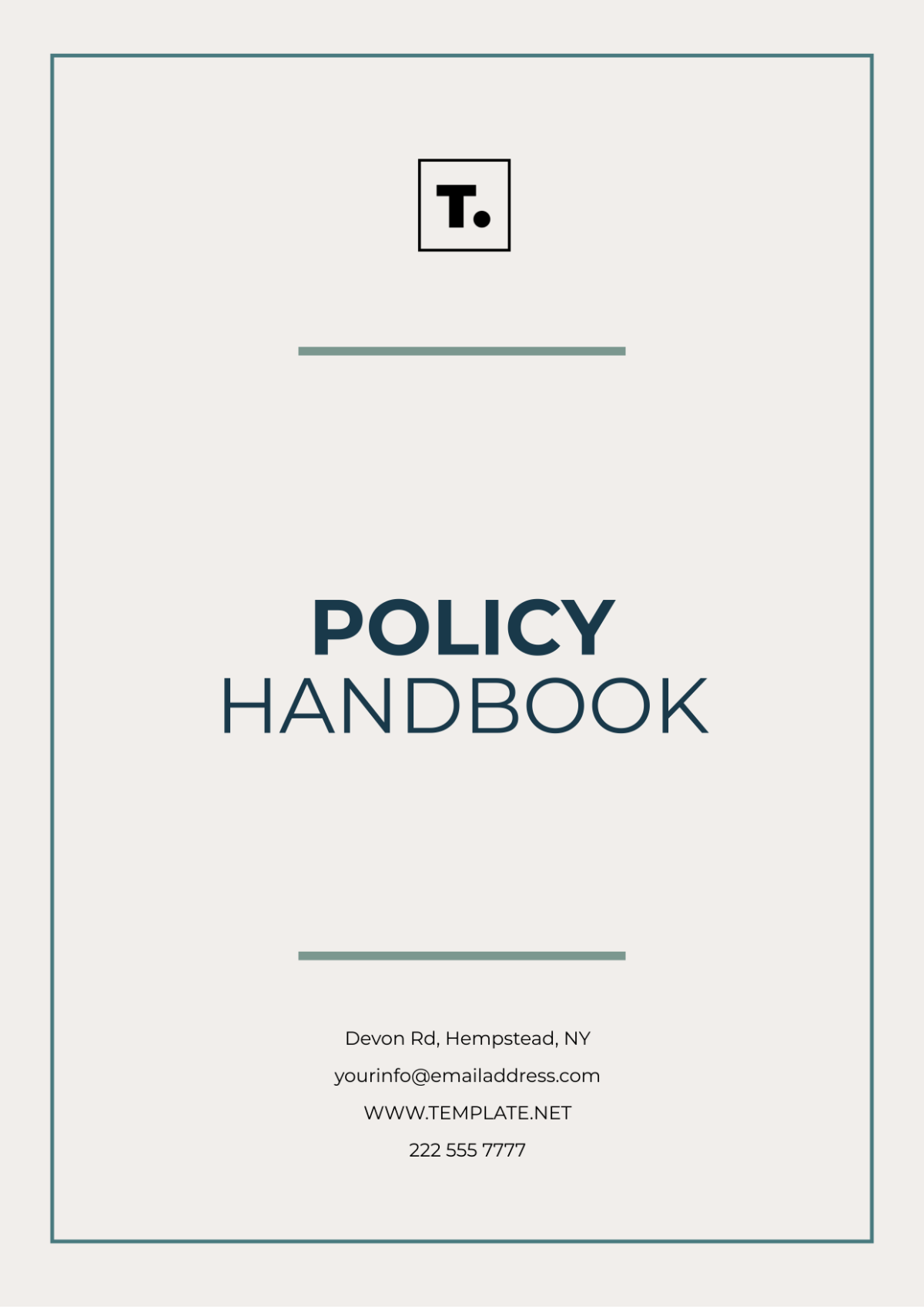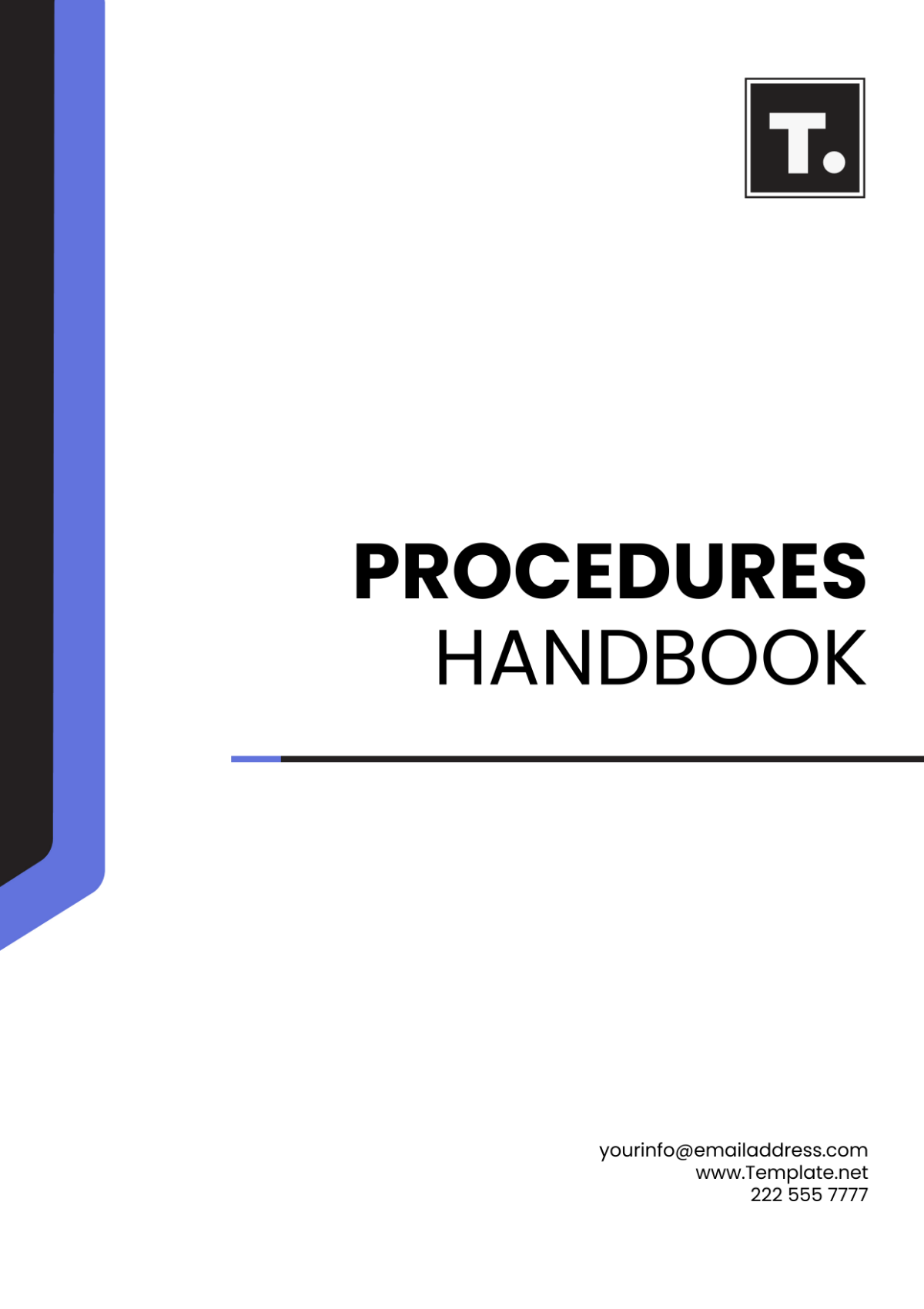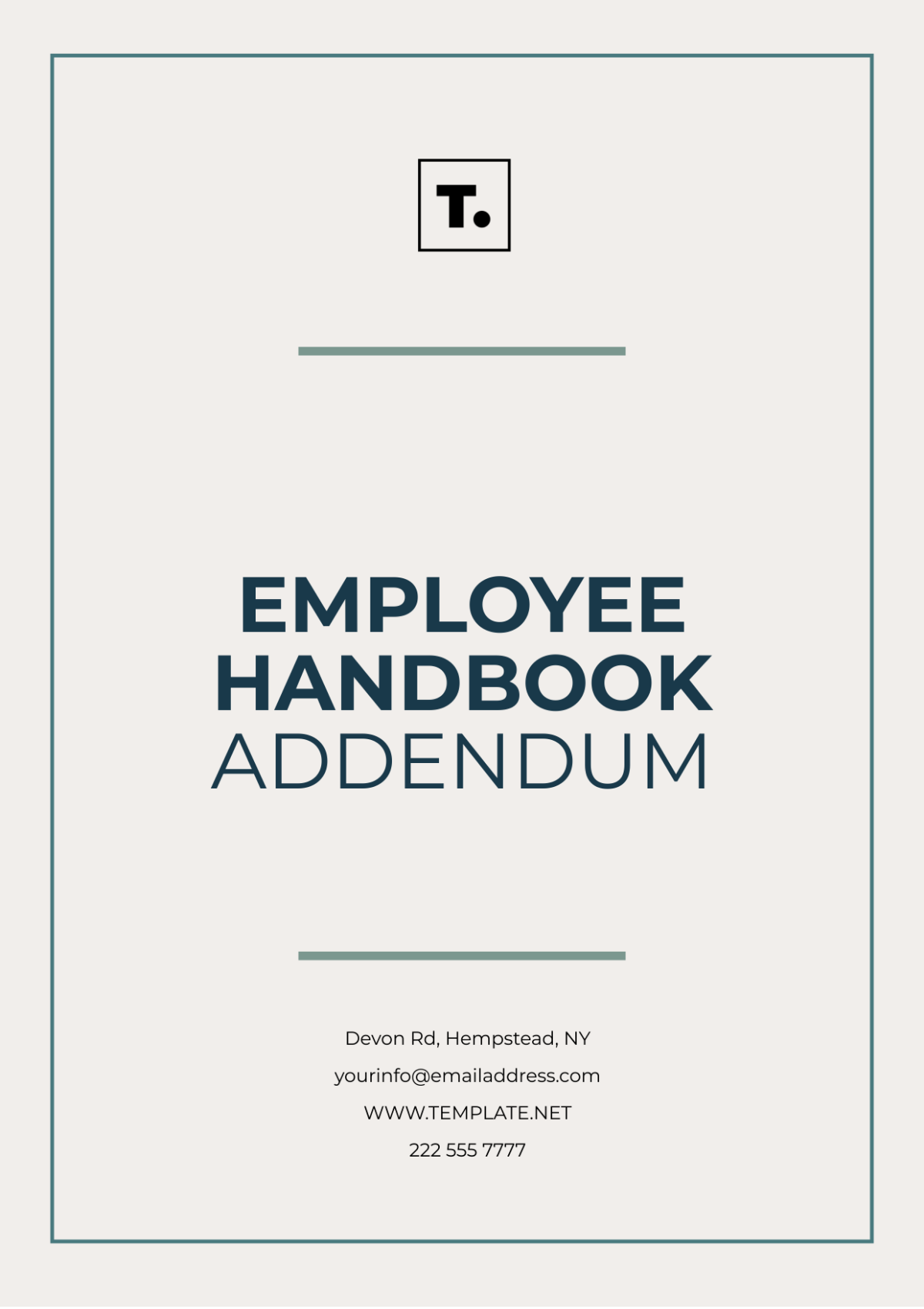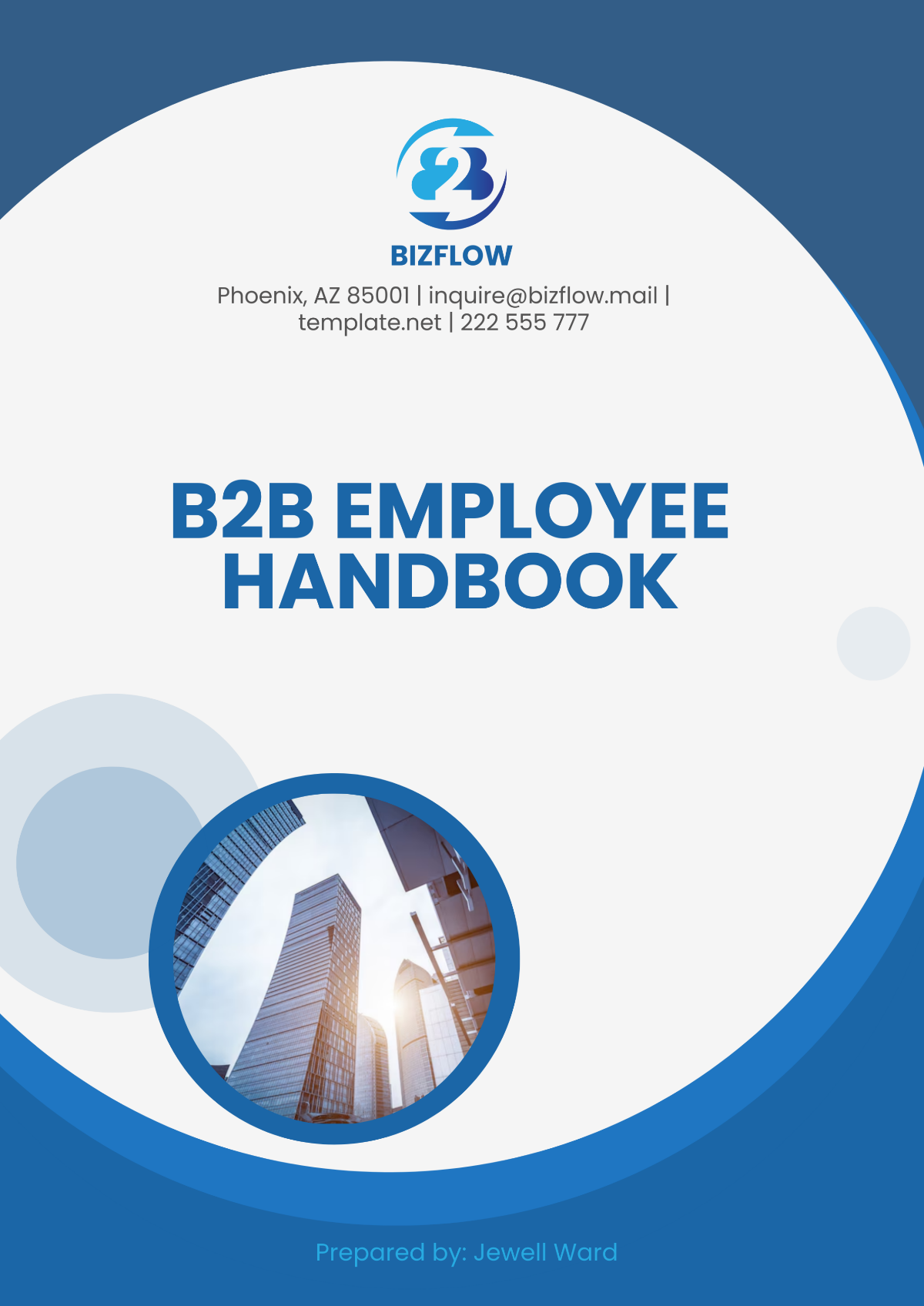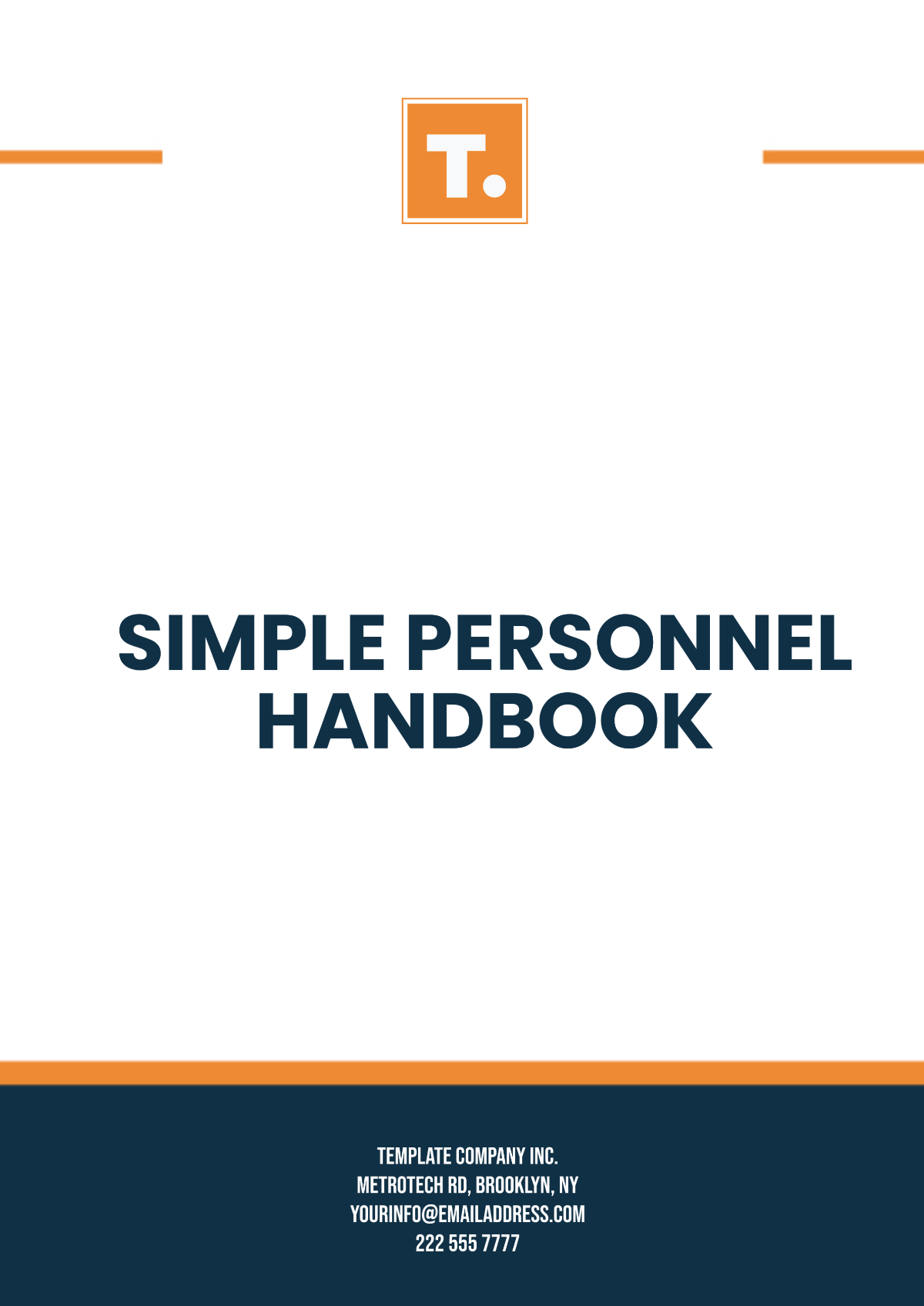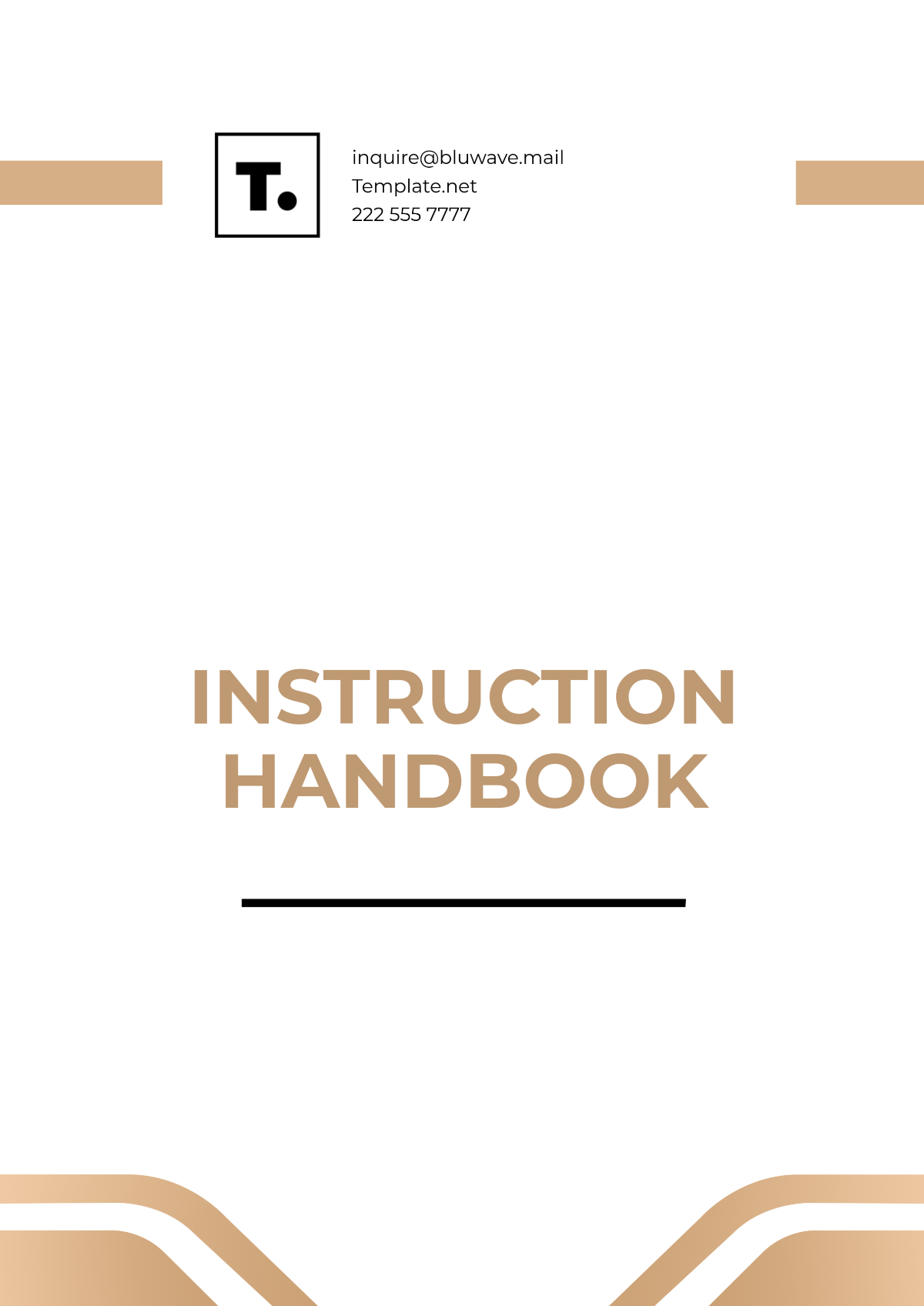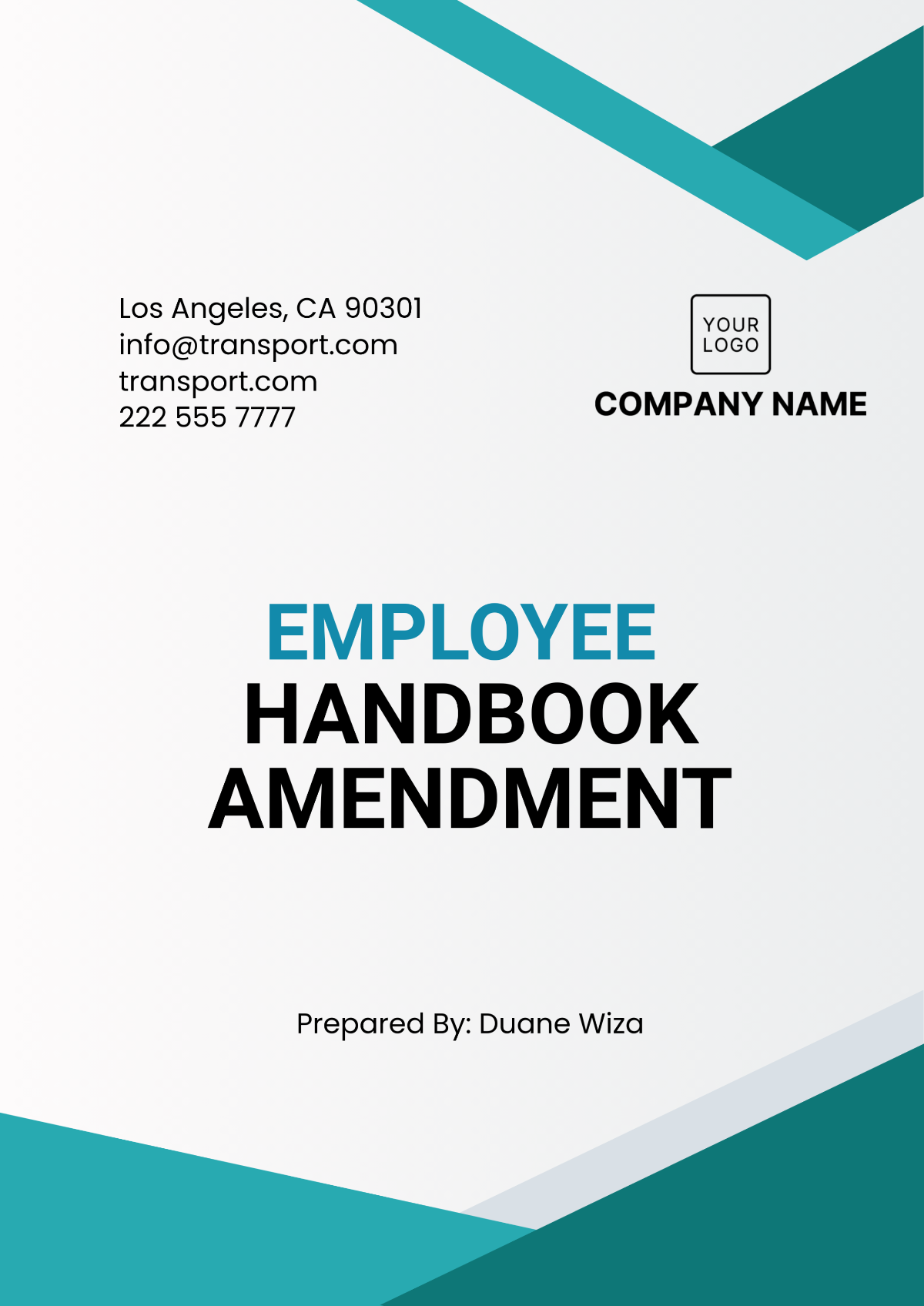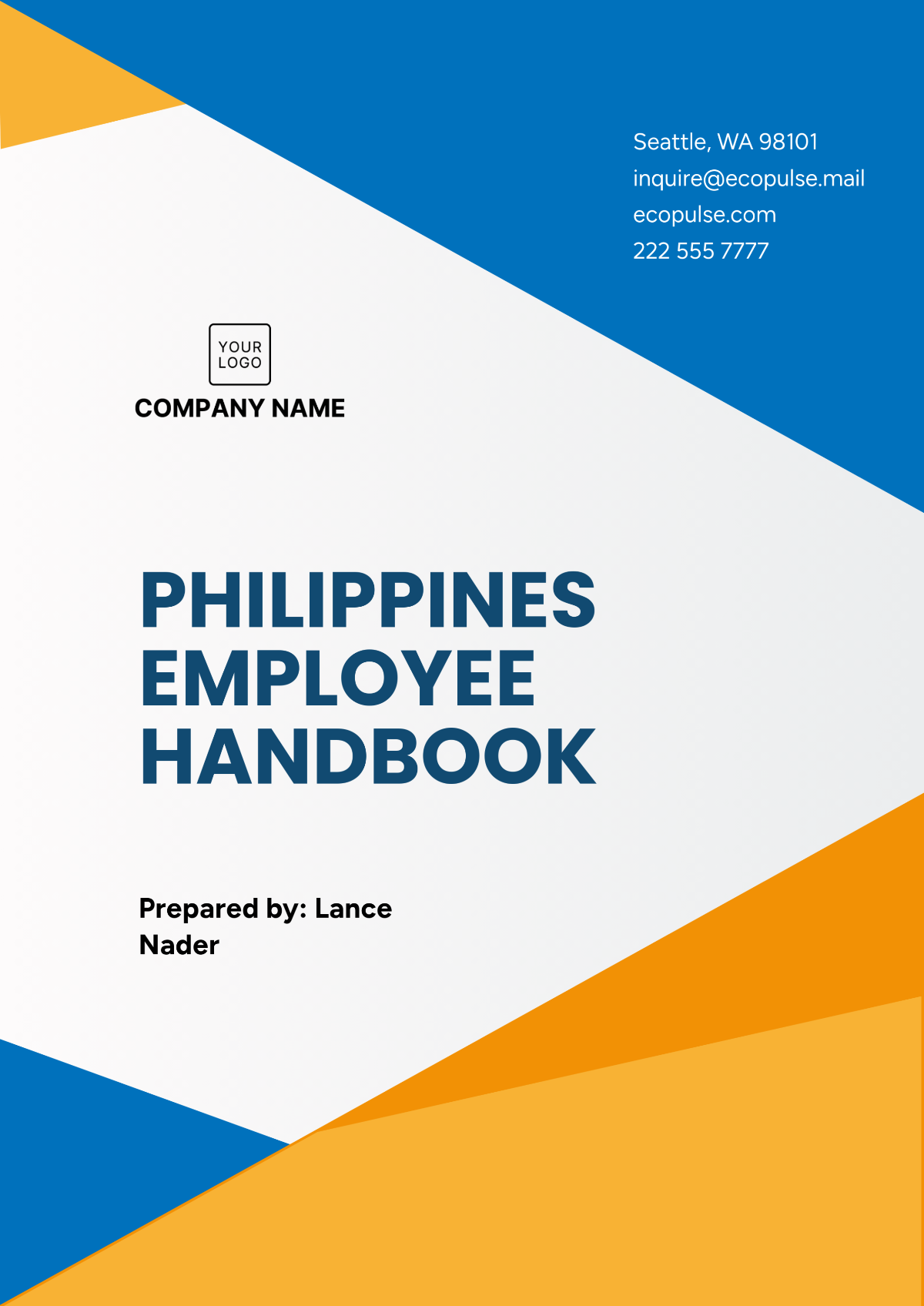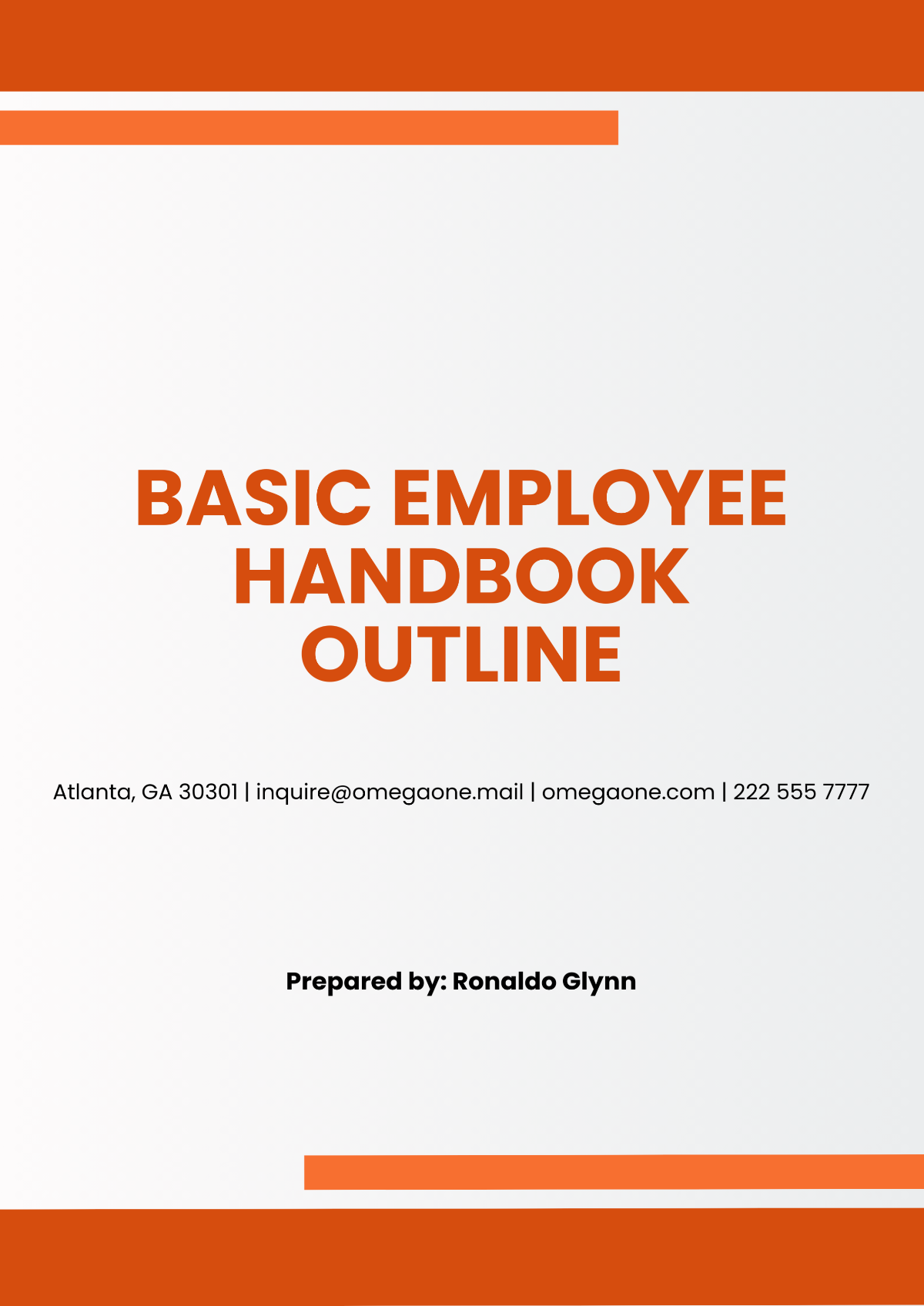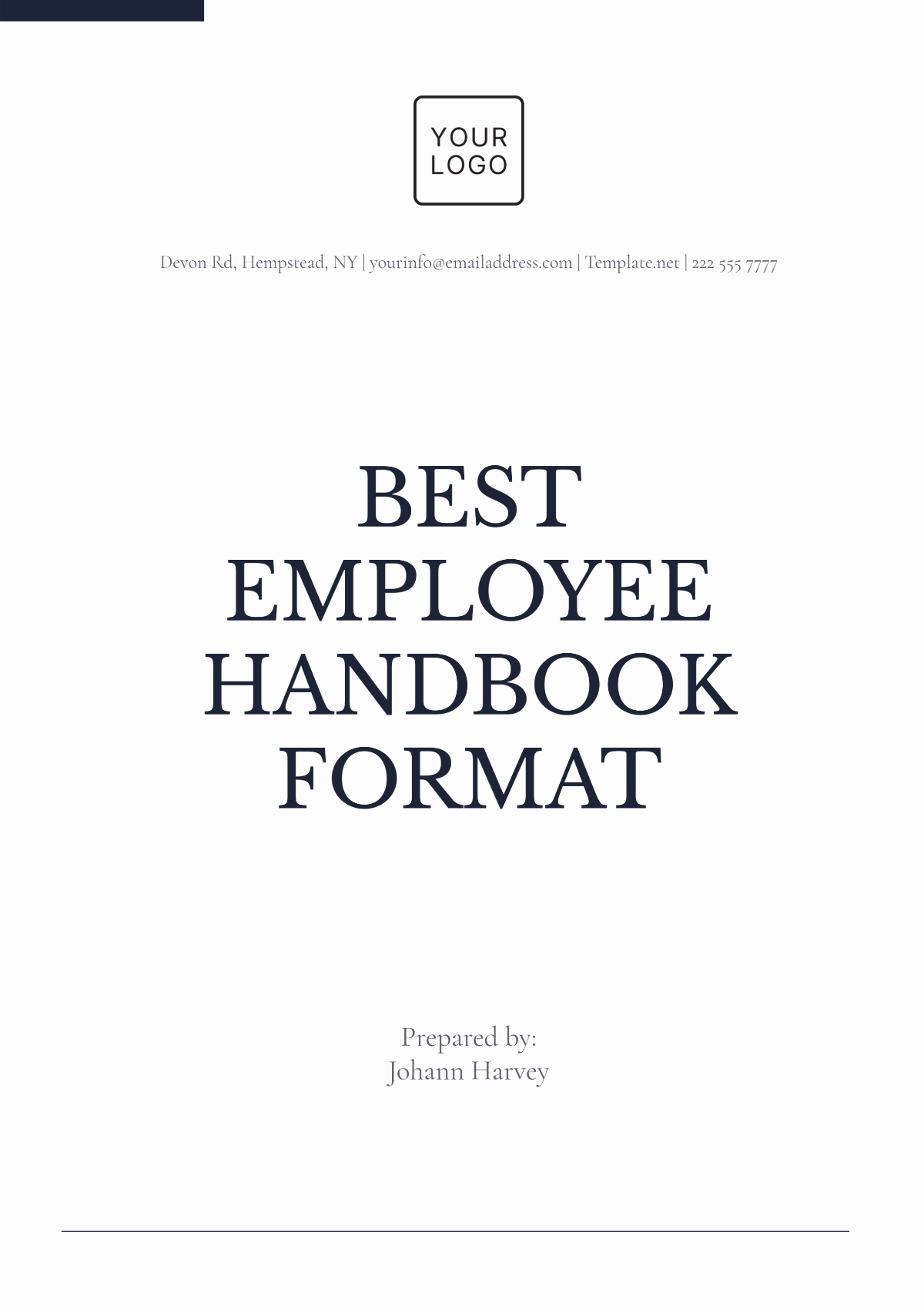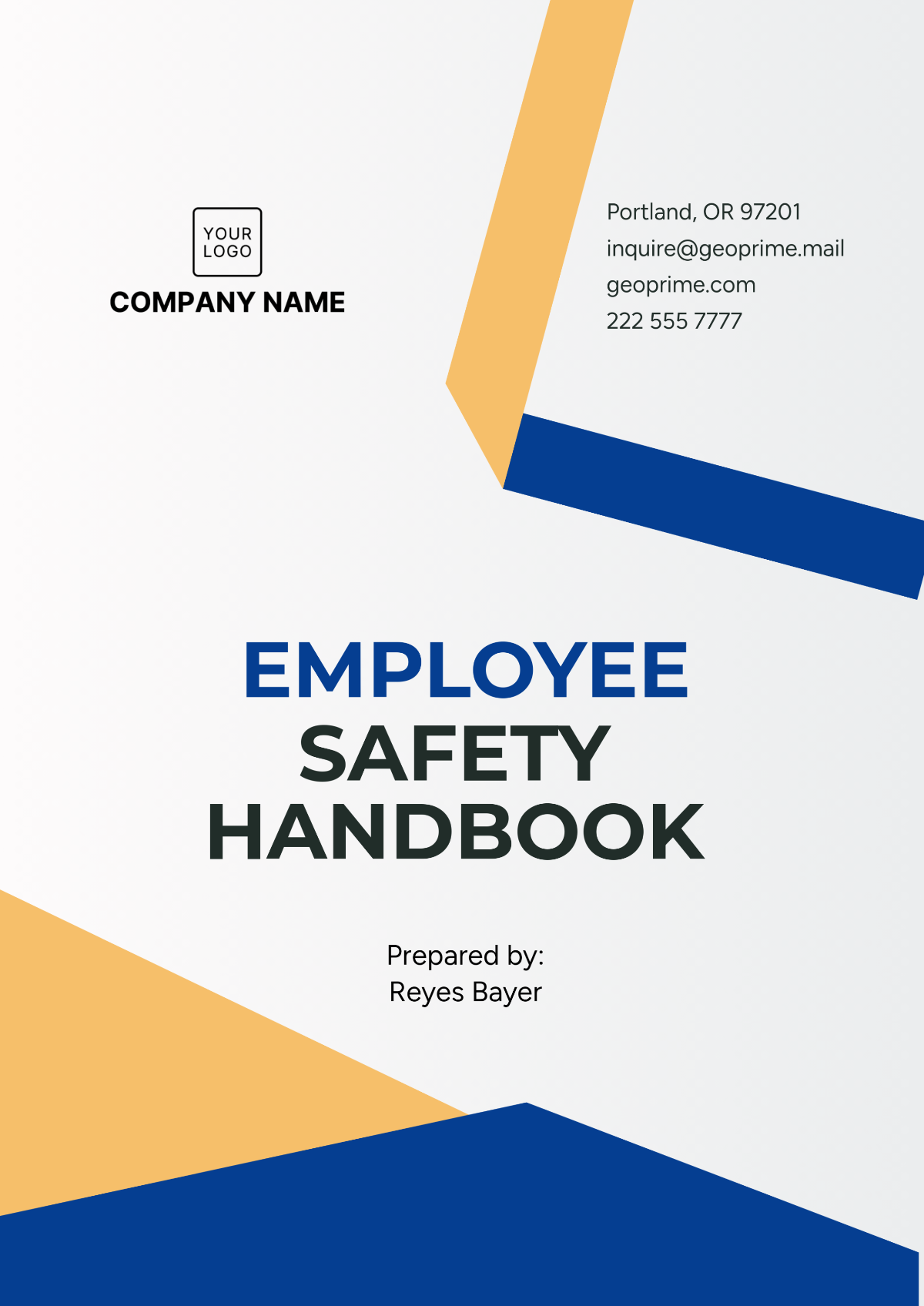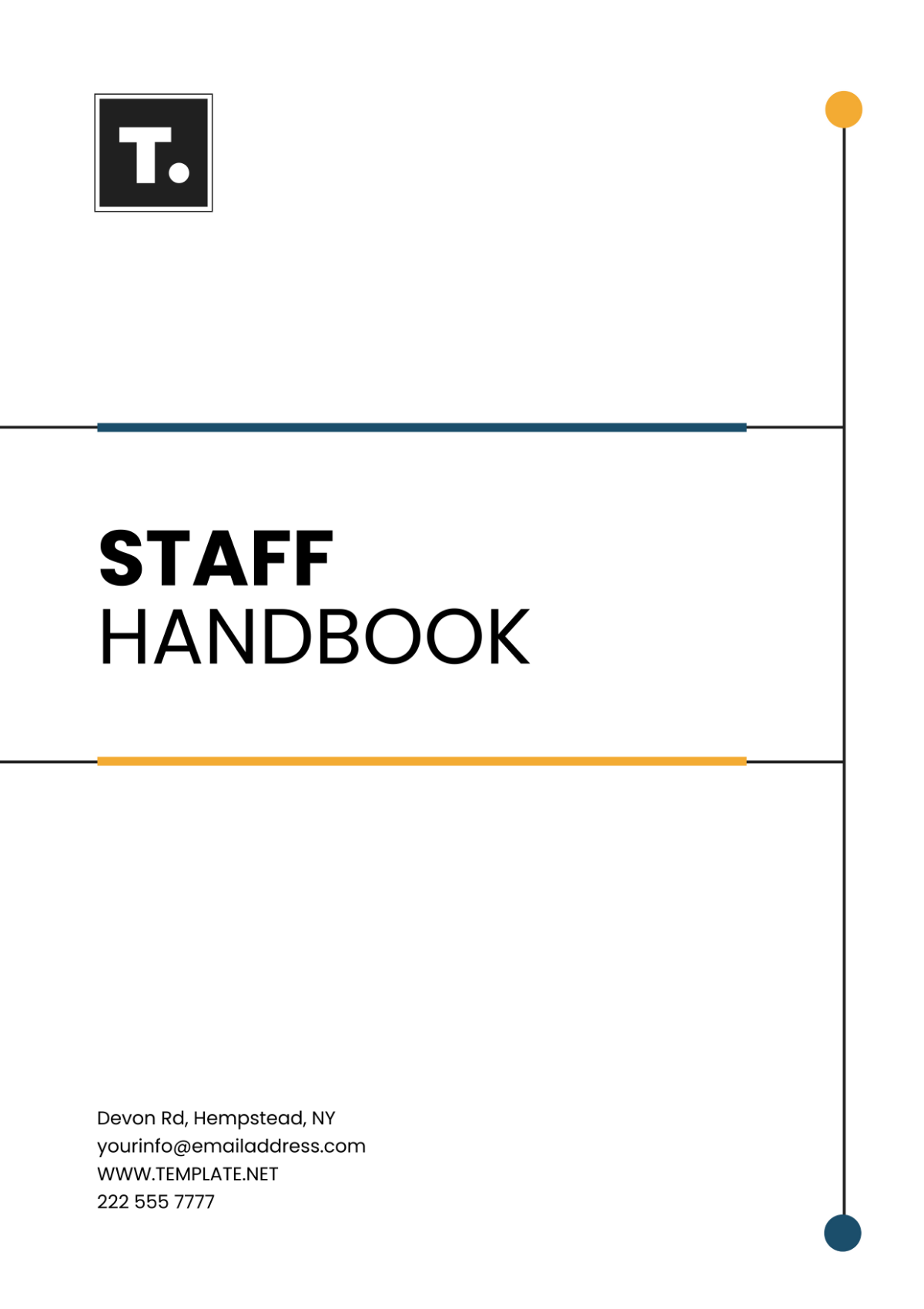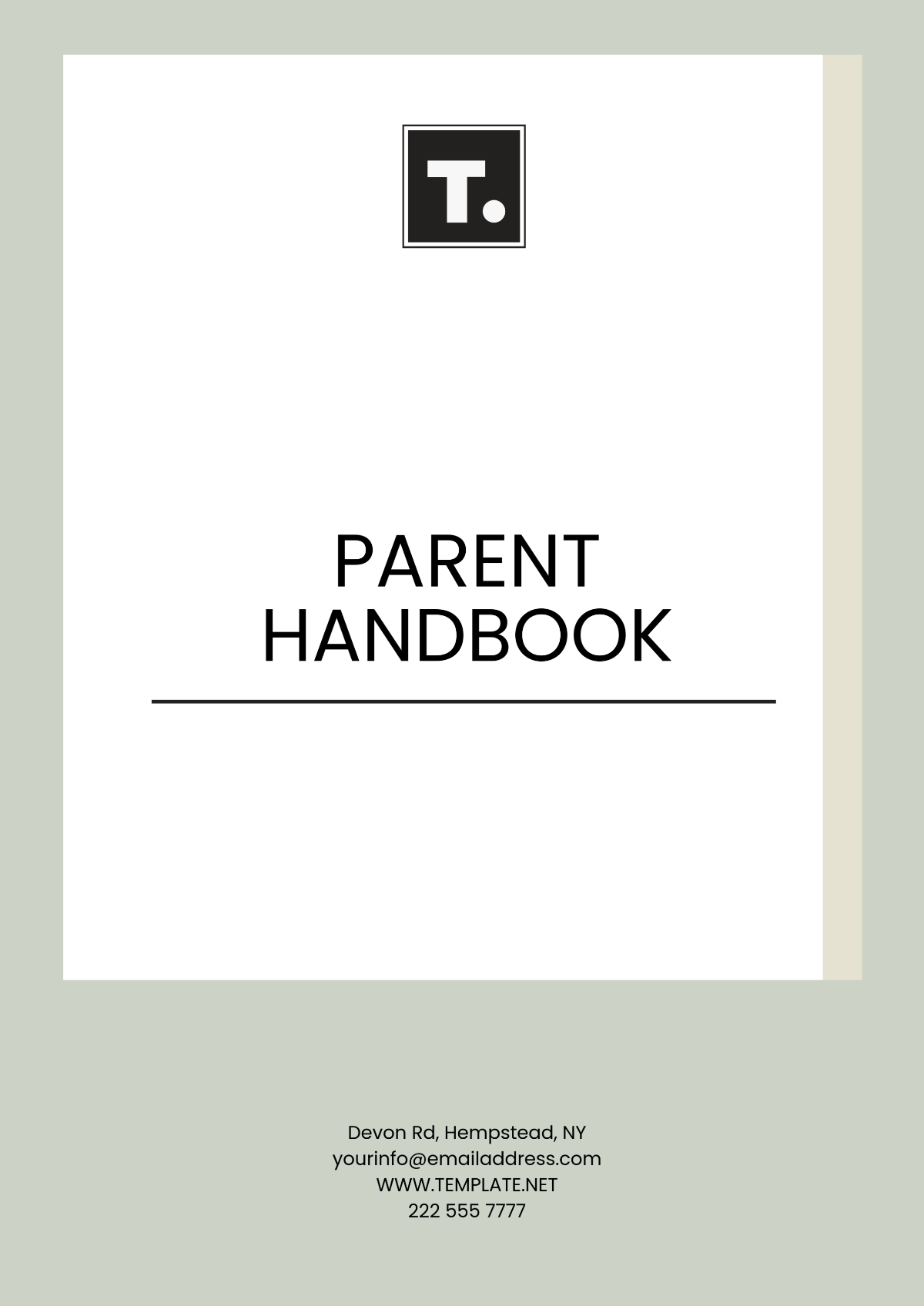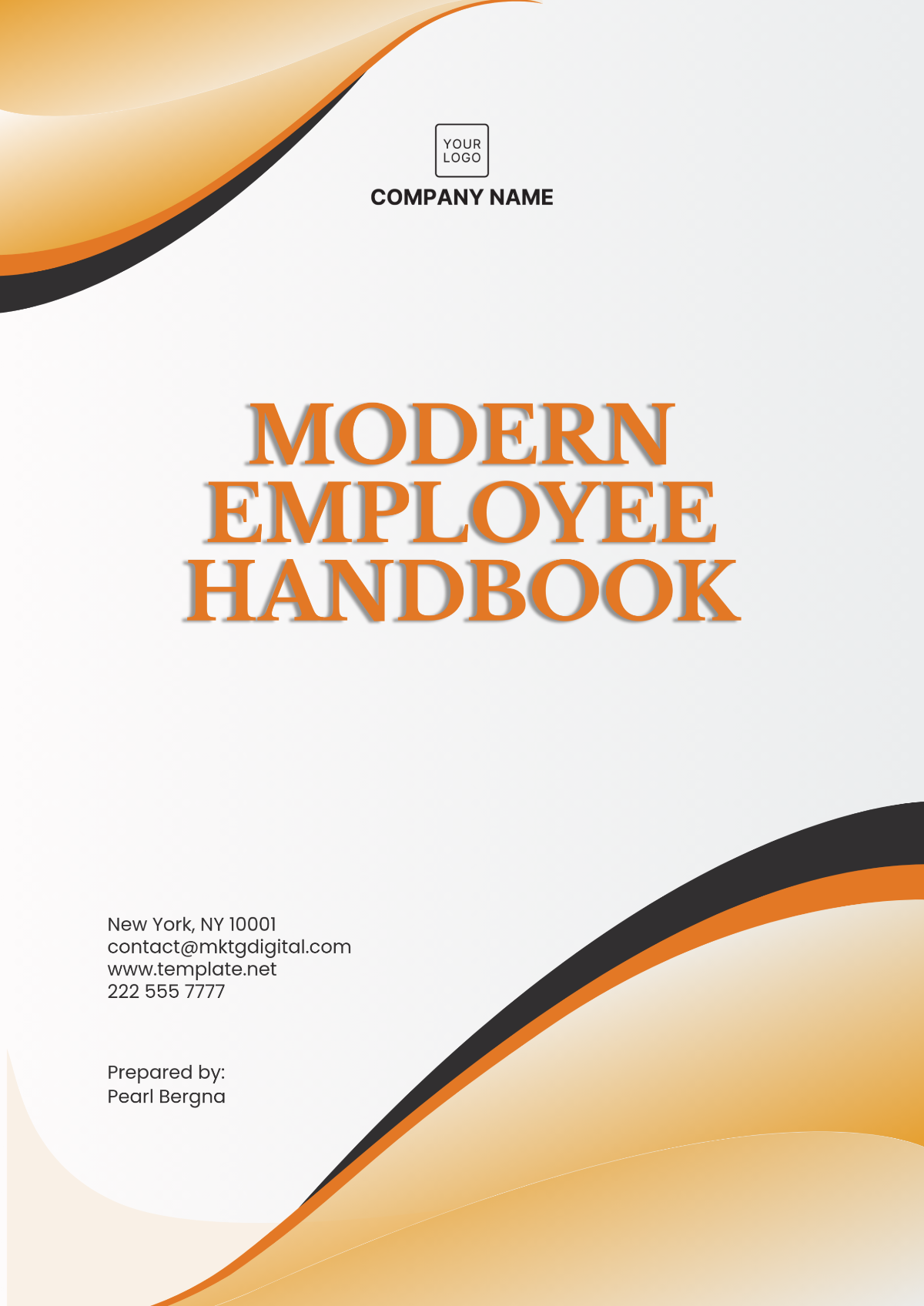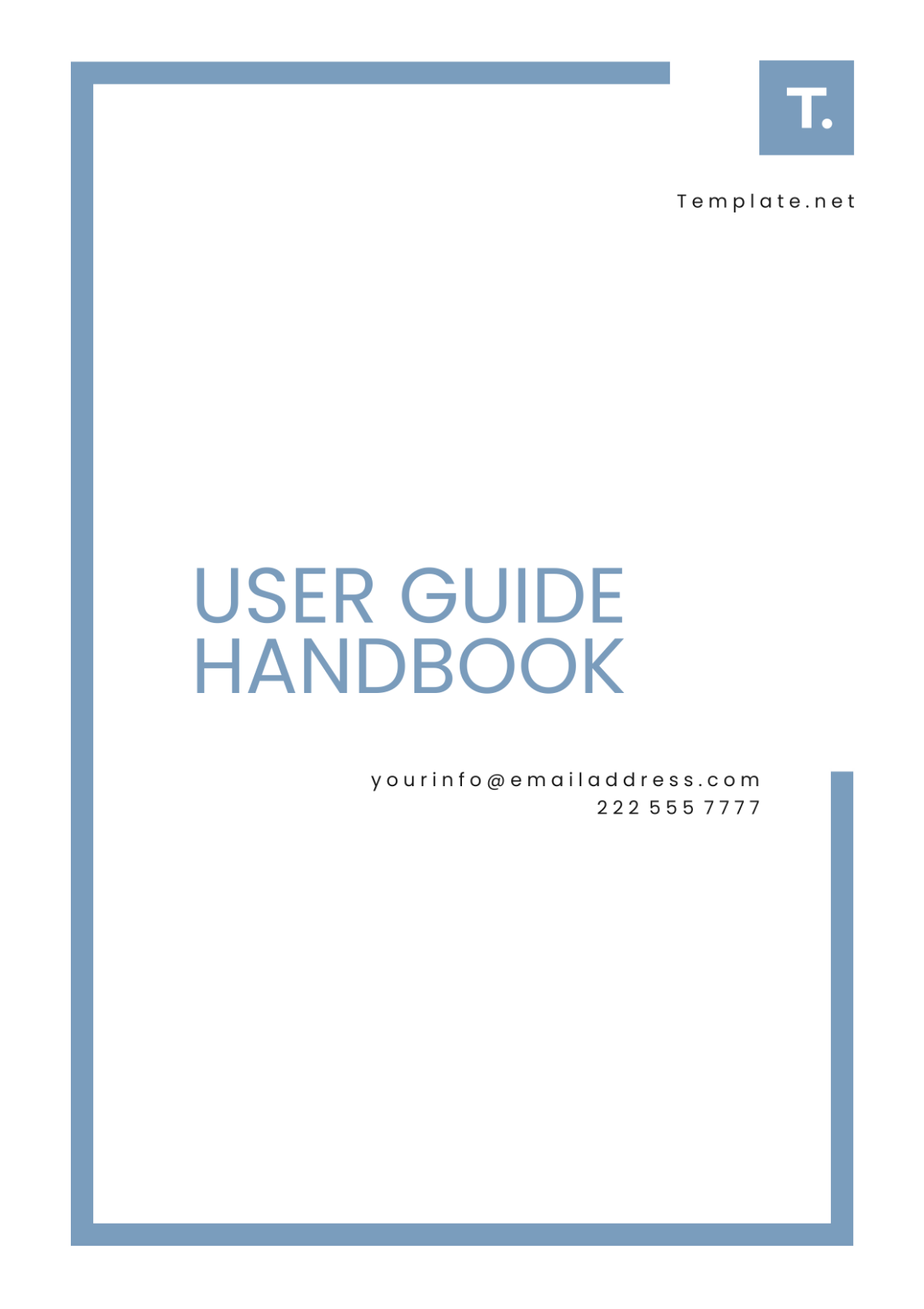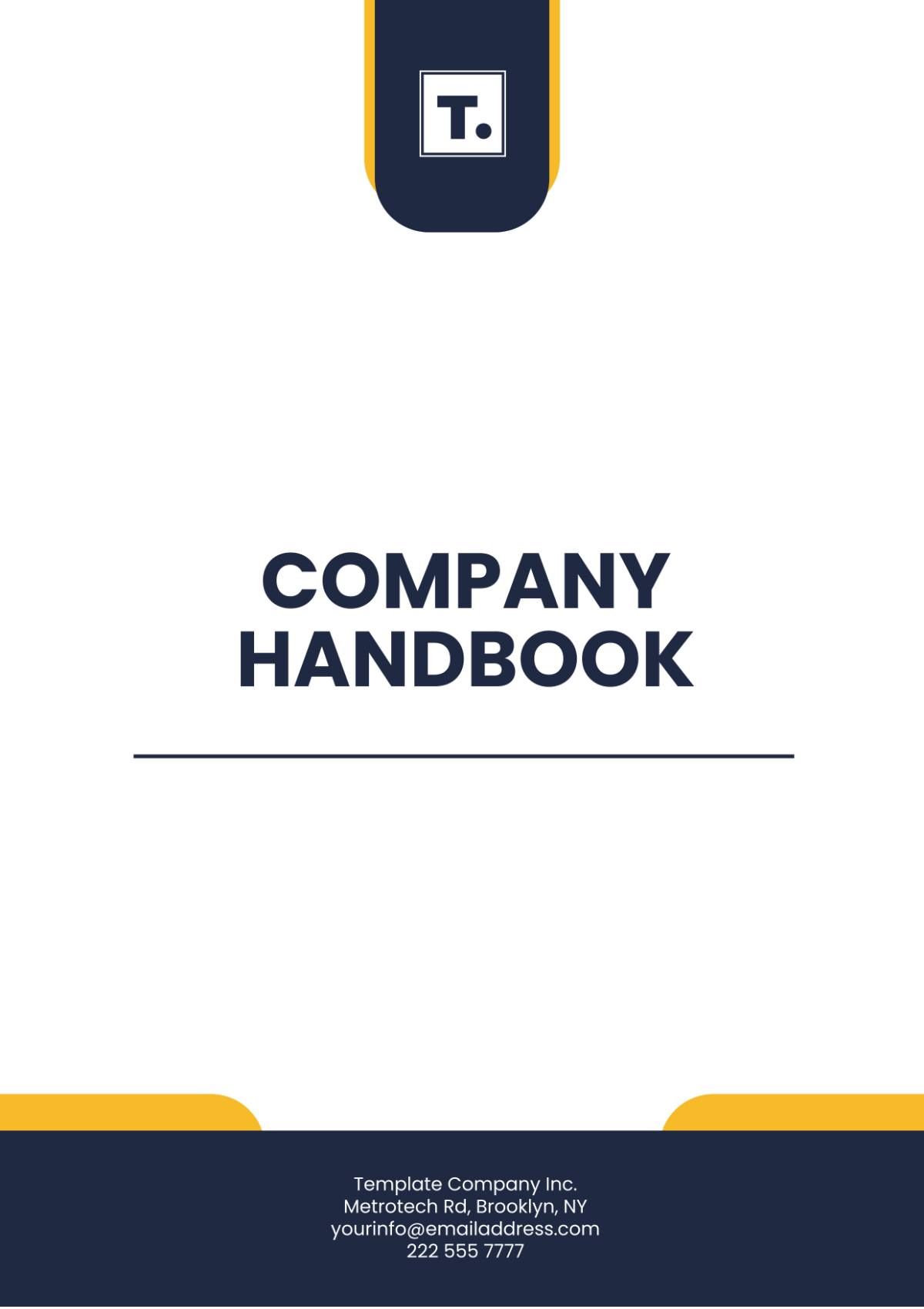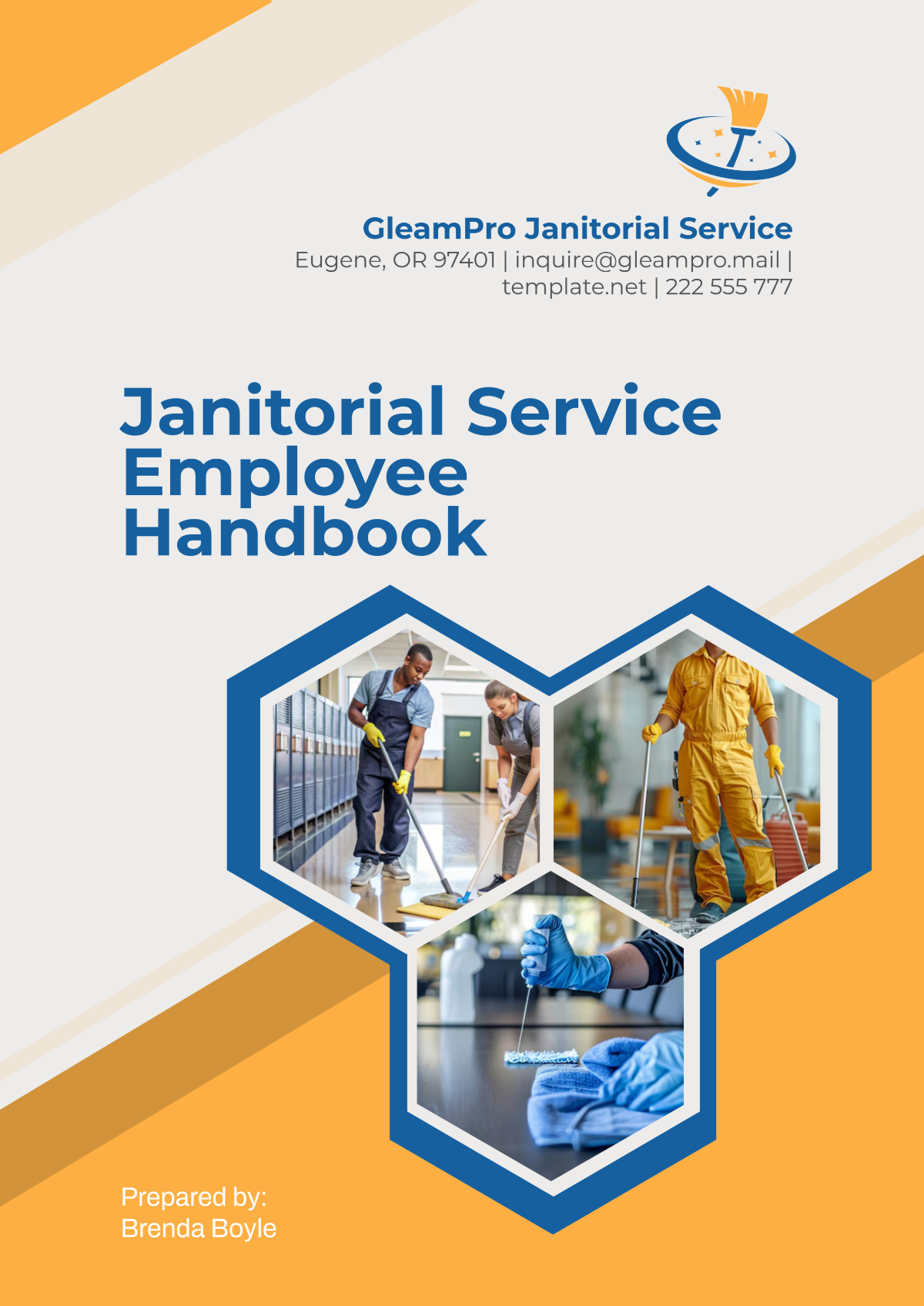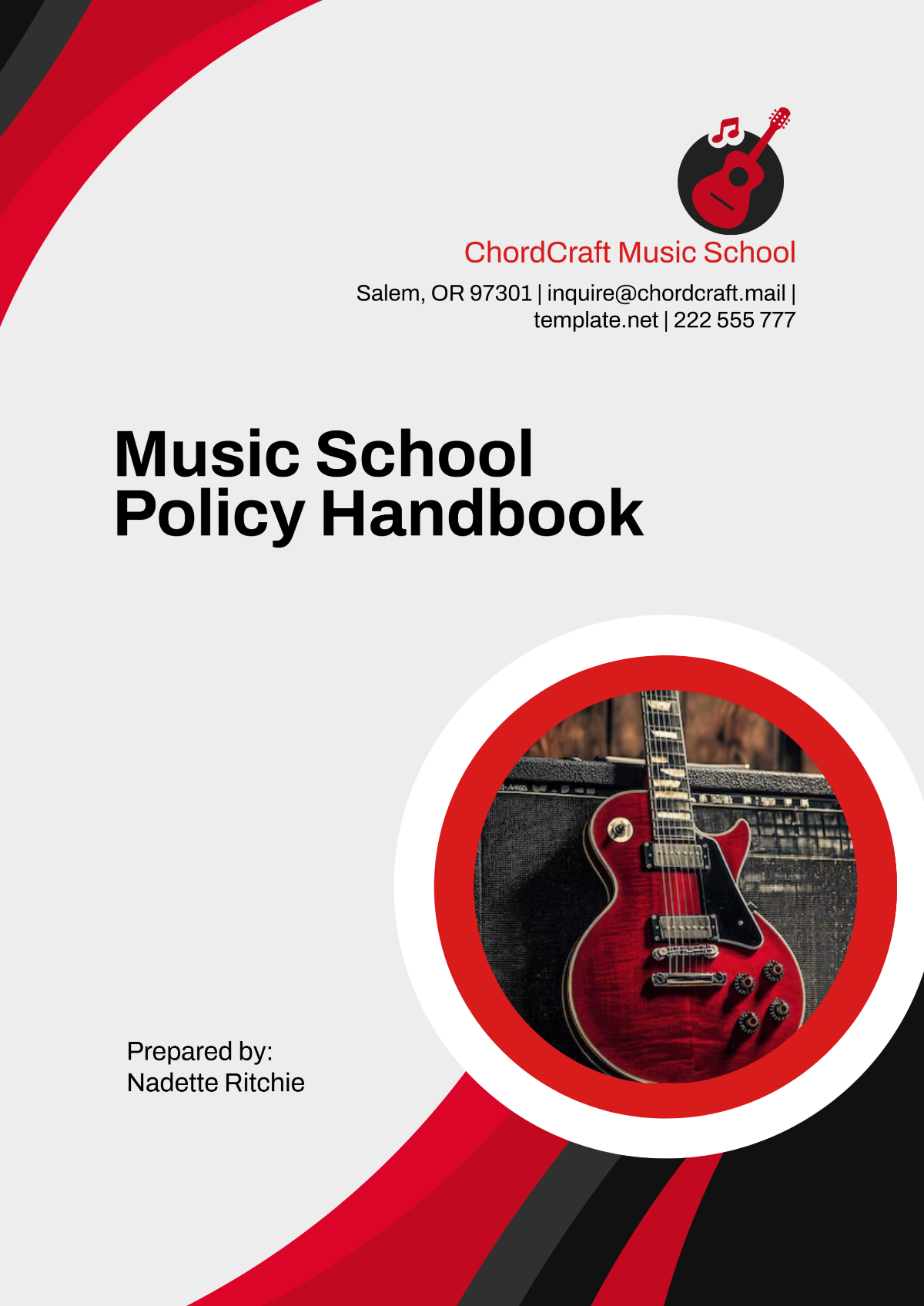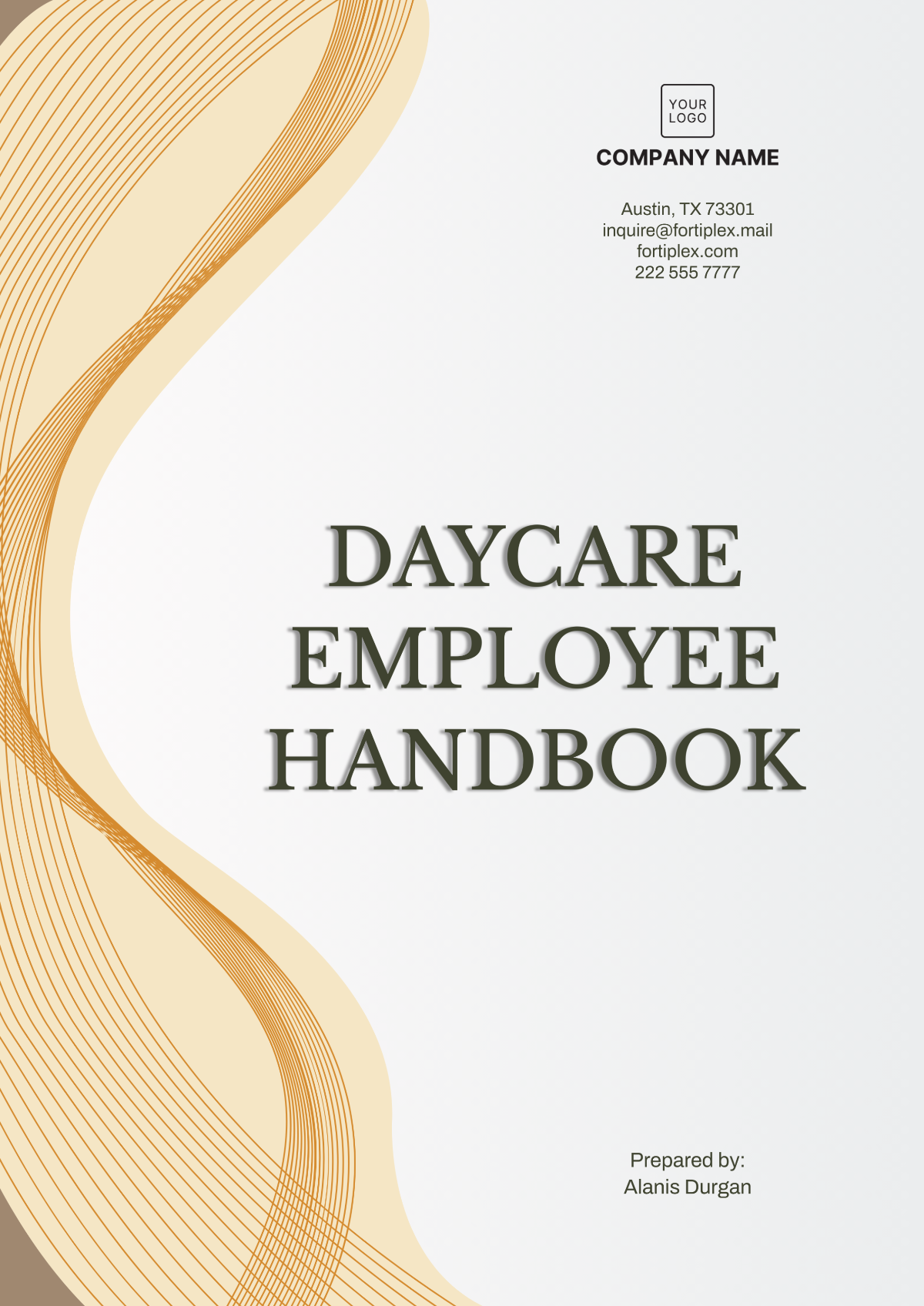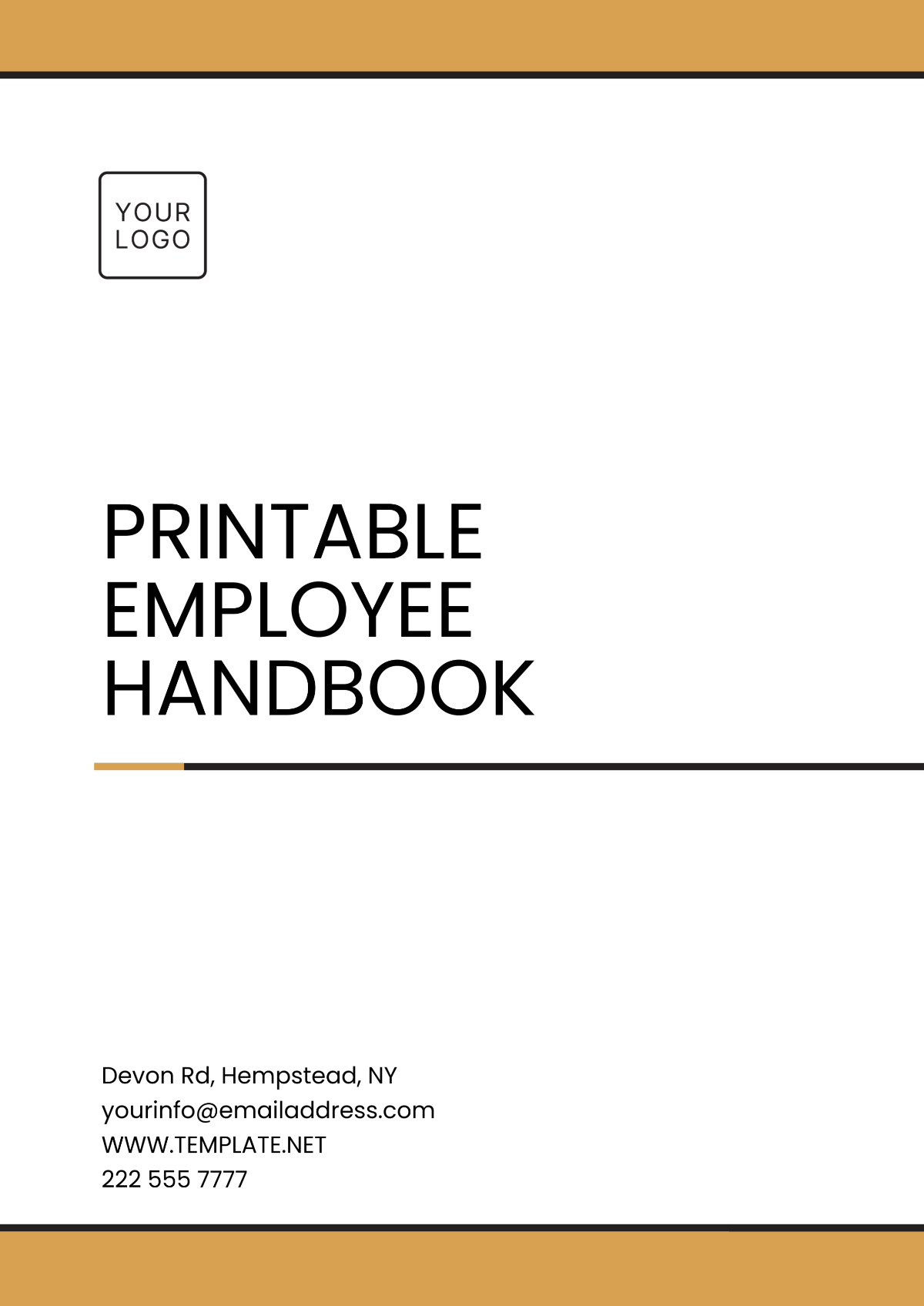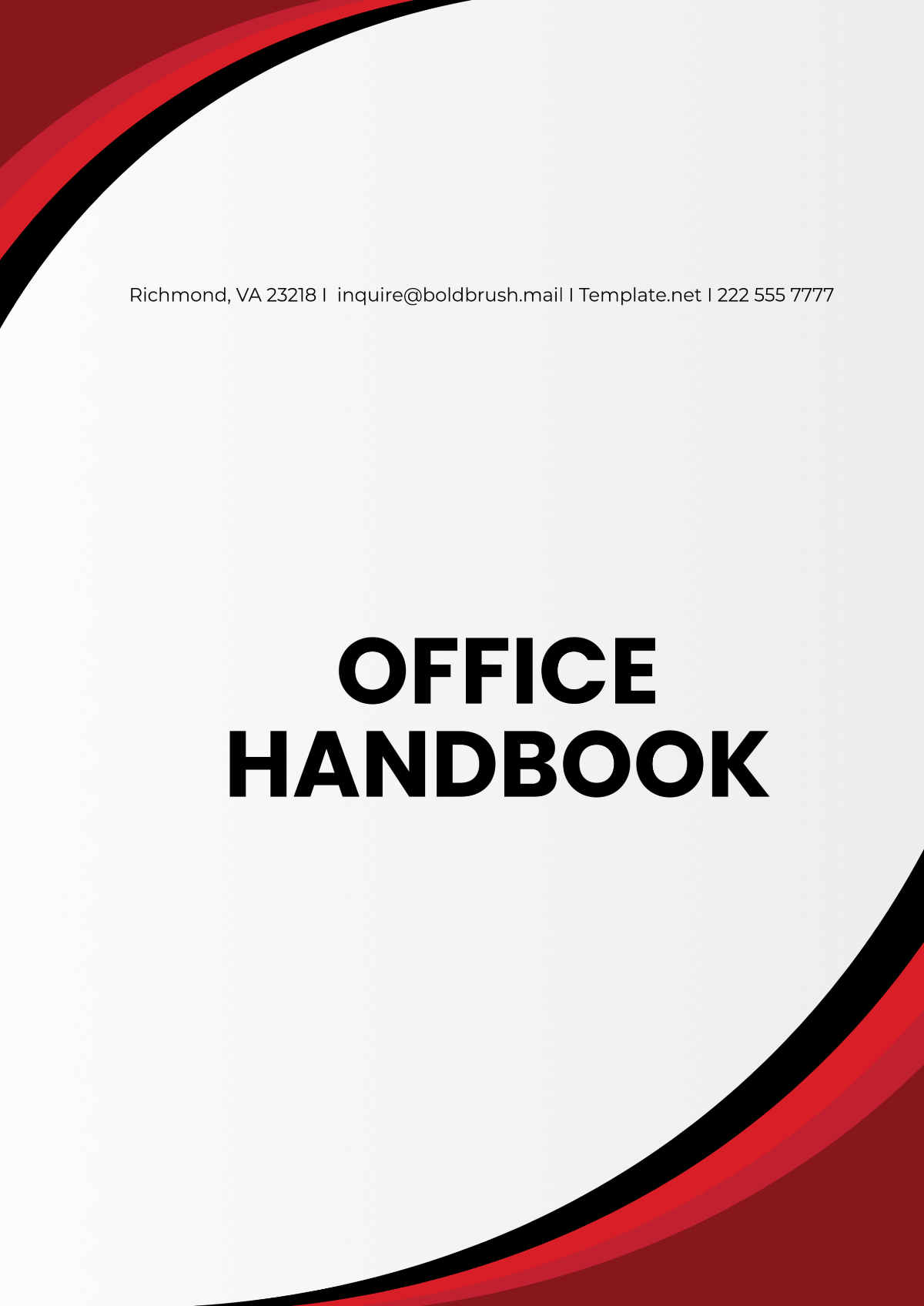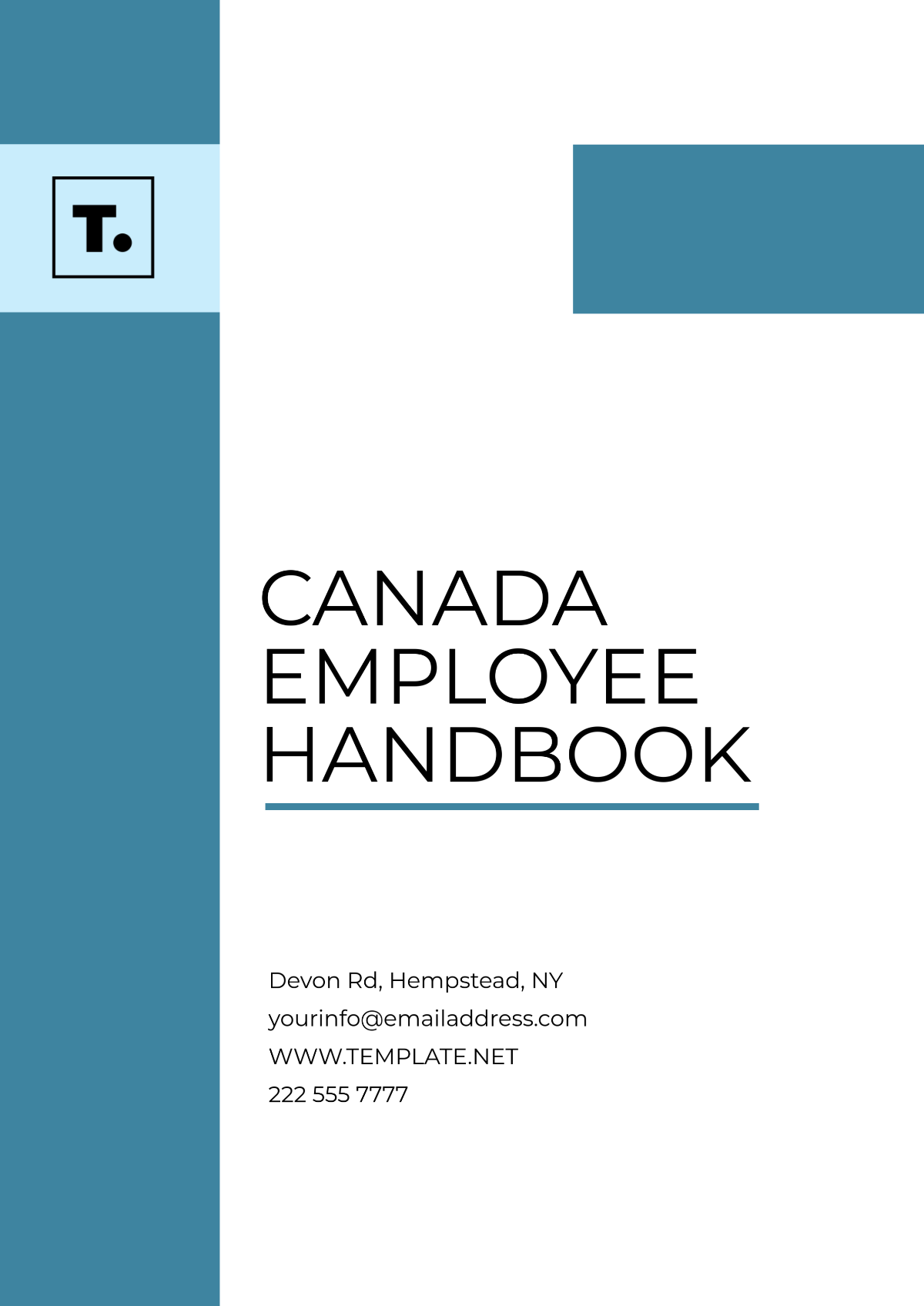IT and Security Handbook
I. Introduction
This handbook serves as a comprehensive guide for the implementation and management of IT and security policies within [YOUR COMPANY NAME]. It aims to establish standardized procedures and best practices that safeguard the organization's digital and physical assets. The handbook covers essential IT and security protocols, ensuring that all stakeholders understand their roles and responsibilities in maintaining the integrity and security of the company’s information systems.
II. IT Policies
IT policies are crucial in defining the acceptable use and responsibilities associated with the organization’s IT resources. These policies help maintain the efficiency, security, and integrity of IT systems.
A. Acceptable Use Policy
Purpose: Defines the acceptable use of IT resources to ensure that employees use these resources in a manner that supports the organization's objectives without compromising security or productivity.
Scope: Applies to all employees, contractors, and third-party users with access to the company’s IT resources.
Key Points:
Use IT resources primarily for work-related activities.
Prohibit the use of IT resources for illegal activities, harassment, or inappropriate content.
B. Software Installation and Management
Purpose: Establish guidelines for the proper installation, licensing, and management of software to prevent security vulnerabilities and legal risks.
Key Points:
Only IT-approved software may be installed.
Regular updates and patches must be applied to all software.
Unauthorized software is prohibited.
C. Internet Usage Policy
Purpose: Regulates internet use to prevent misuse, ensure productivity, and protect against security threats.
Key Points:
Internet access should be primarily for business purposes.
Prohibited activities include accessing inappropriate content, downloading unauthorized files, and using social media for non-work-related purposes.
D. Email and Communication Policy
Purpose: Ensures secure and appropriate use of email and communication tools to prevent data breaches and maintain professionalism.
Key Points:
All communications must be professional and business-related.
Sensitive information must be encrypted when transmitted.
Phishing and spam emails should be reported immediately.
III. Security Policies
Security policies are designed to protect the integrity, confidentiality, and availability of organizational information. These policies provide a framework for securing data, managing access, and responding to incidents.
A. Data Protection Policy
Purpose: Safeguards organizational data against unauthorized access, alteration, or destruction.
Key Points:
Implement data encryption for sensitive information.
Regularly back up data to secure locations.
Ensure compliance with data protection laws and regulations.
B. Access Control Policy
Purpose: Defines the processes for granting, managing, and revoking access to the organization's systems and data.
Key Points:
Access is granted based on the principle of least privilege.
Implement role-based access controls (RBAC).
Conduct regular access reviews.
C. Incident Response Plan
Purpose: Outlines the procedures for identifying, responding to, and mitigating security incidents.
Key Points:
Establish a dedicated incident response team.
Implement a clear chain of command during incidents.
Maintain a log of all incidents for future analysis.
D. Physical Security Measures
Purpose: Protects physical IT infrastructure and assets from unauthorized access or damage.
Key Points:
Implement access controls (e.g., keycards, biometrics) for secure areas.
Ensure surveillance and monitoring systems are in place.
Regularly audit physical security measures.
IV. User Responsibilities
Users are key to maintaining the security and integrity of IT resources. This section outlines their responsibilities in protecting organizational assets.
A. Maintaining Strong Passwords
Purpose: Prevent unauthorized access by ensuring strong and secure passwords.
Key Points:
Use complex passwords (minimum 8 characters, including letters, numbers, and symbols).
Change passwords regularly and avoid reusing them.
Never share passwords with others.
B. Reporting Suspicious Activities
Purpose: Encourage prompt reporting of suspicious activities to prevent security breaches.
Key Points:
Report any unusual system behavior or unauthorized access attempts.
Use designated reporting channels for security concerns.
C. Complying with IT and Security Policies
Purpose: Ensure that all users adhere to established IT and security policies.
Key Points:
Regularly review and acknowledge understanding of IT and security policies.
Participate in mandatory security training sessions.
D. Safeguarding Personal and Organizational Data
Purpose: Protect both personal and organizational data from unauthorized access or loss.
Key Points:
Avoid storing sensitive data on unsecured devices.
Use encryption tools for data transmission and storage.
Dispose of data securely when no longer needed.
V. IT Department Responsibilities
The IT department plays a critical role in the implementation, maintenance, and monitoring of IT systems and security measures. This section details their key responsibilities.
A. System Administration
Purpose: Manage and maintain the organization's IT infrastructure to ensure smooth operations.
Key Points:
Regularly update and patch systems to address vulnerabilities.
Monitor system performance and resolve technical issues promptly.
B. Network Management
Purpose: Oversee the organization’s network to ensure reliability and security.
Key Points:
Implement network security measures, including firewalls and intrusion detection systems.
Regularly monitor network traffic for suspicious activities.
C. Software Deployment
Purpose: Ensure that all software is properly installed, licensed, and maintained.
Key Points:
Manage software inventory and licensing to ensure compliance.
Deploy updates and patches to prevent security breaches.
D. Security Protocol Enforcement
Purpose: Enforce security protocols and policies to protect the organization’s IT resources.
Key Points:
Conduct regular security audits and vulnerability assessments.
Implement and enforce security measures such as multi-factor authentication (MFA).
VI. Incident Response
Incident response is critical for minimizing the impact of security breaches. This section outlines the steps to be taken when a security incident occurs.
Incident Response Steps | Actions | Description |
|---|---|---|
Identify the Incident | Monitor and detect | Continuously monitor systems to detect potential incidents. |
Contain the Incident | Isolate affected systems | Prevent the incident from spreading by isolating compromised systems. |
Eradicate the Root Cause | Remove malware, fix vulnerabilities | Identify and remove the root cause of the incident to prevent recurrence. |
Recover Affected Systems | Restore from backups | Restore systems to operational status using secure backups. |
Review and Document | Analyze and document | Document the incident and review the response to improve future protocols. |
VII. Access Control
Access control is fundamental to protecting systems and data. This section outlines the measures used to ensure that only authorized individuals can access the organization's resources.
A. User Authentication
Purpose: Ensure that users are who they claim to be before granting access to systems.
Key Points:
Implement strong password policies.
Require regular password changes and enforce account lockouts after multiple failed attempts.
B. Role-Based Access Control (RBAC)
Purpose: Assign access rights based on the user’s role within the organization.
Key Points:
Ensure that access rights align with job responsibilities.
Regularly review and update roles and permissions as needed.
C. Multi-Factor Authentication (MFA)
Purpose: Enhance security by requiring multiple forms of verification before granting access.
Key Points:
Implement MFA for critical systems and sensitive data access.
Use combinations of something the user knows (password), something the user has (security token), and something the user is (biometric verification).
D. Periodic Access Reviews
Purpose: Regularly review access rights to ensure they are appropriate and current.
Key Points:
Conduct quarterly access reviews to validate that users still require access.
Revoke access for users who no longer need it or have left the organization.
VIII. Data Protection
Data protection measures to ensure the confidentiality and integrity of organizational data.
Data Type | Protection Measure |
|---|---|
Personal Identifiable Information (PII) | Encryption, Access Control |
Financial Data | Encryption, Regular Audits |
Intellectual Property | Access Control, Monitoring |
IX. Training and Awareness
Regular training and awareness programs are crucial to ensuring that all employees understand and comply with the IT and security policies outlined in this handbook. Continuous education helps to minimize risks, enhance security posture, and ensure that everyone is prepared to respond appropriately to potential threats.
A. Security Awareness Training
Purpose: To educate employees on the importance of security and their role in protecting the organization’s assets.
Key Points:
Conduct mandatory security awareness training sessions annually.
Cover topics such as password security, safe internet practices, and recognizing phishing attempts.
Provide refresher courses and updates when new threats or technologies emerge.
B. Phishing Simulations
Purpose: To test and improve employees' ability to recognize and avoid phishing attacks.
Key Points:
Implement periodic phishing simulations to assess employee vigilance.
Provide immediate feedback and corrective actions for employees who fall victim to simulated phishing attempts.
Use simulation results to tailor additional training where needed.
C. Policy Review Sessions
Purpose: To ensure that all employees are familiar with and understand the organization’s IT and security policies.
Key Points:
Schedule regular policy review sessions, especially when significant updates or changes occur.
Encourage an open forum for employees to ask questions and seek clarifications.
Document attendance and comprehension to ensure compliance.
D. Emergency Response Drills
Purpose: To prepare employees for effective and timely responses during IT or security incidents.
Key Points:
Conduct emergency response drills, including simulations of security breaches, data leaks, or system outages.
Evaluate the effectiveness of the response and identify areas for improvement.
Update the incident response plan based on drill outcomes and ensure all employees are informed of any changes.
X. Conclusion
Adherence to the guidelines and policies outlined in this handbook is critical to the security and efficient management of IT resources within [YOUR COMPANY NAME]. This handbook serves as a foundational document that helps protect the organization’s assets, data, and systems from a wide range of security threats. Regular updates to policies, coupled with ongoing training and awareness programs, are essential to staying current with evolving threats and technological advancements.
Summary of Key Points:
Comprehensive IT and Security Policies: Ensure that all employees are aware of and comply with IT and security policies.
User and IT Department Responsibilities: Clearly defined roles help maintain the integrity and security of IT systems.
Incident Response and Access Control: Proactive and reactive measures are in place to manage access and address security incidents.
Training and Awareness: Ongoing education is vital for maintaining a strong security posture.
By following the procedures and best practices outlined in this handbook, [YOUR COMPANY NAME] will be better equipped to safeguard its information assets and maintain the trust and confidence of its stakeholders. Regular reviews and updates of this handbook will ensure that the organization remains resilient in the face of new and emerging threats.
